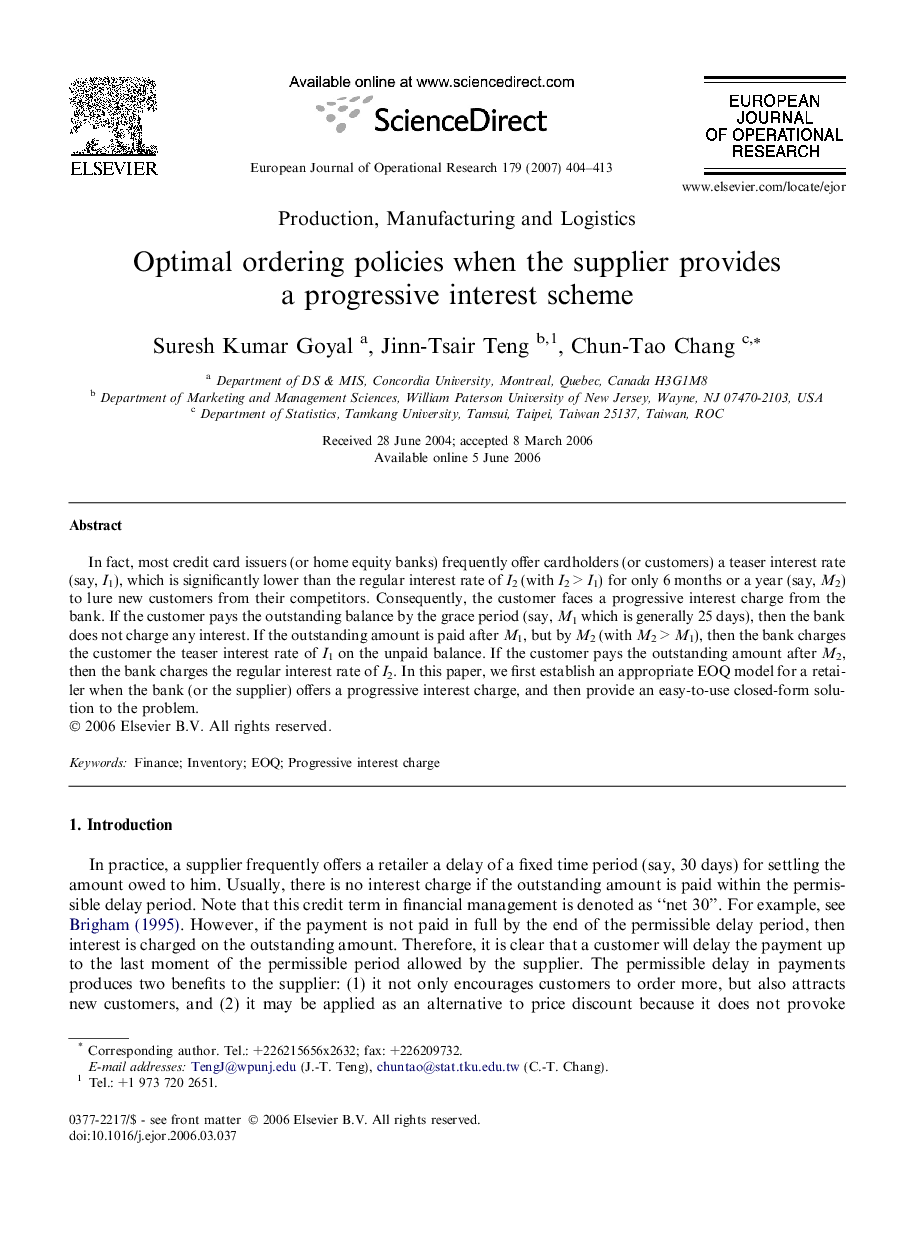| Article ID | Journal | Published Year | Pages | File Type |
|---|---|---|---|---|
| 483198 | European Journal of Operational Research | 2007 | 10 Pages |
In fact, most credit card issuers (or home equity banks) frequently offer cardholders (or customers) a teaser interest rate (say, I1), which is significantly lower than the regular interest rate of I2 (with I2 > I1) for only 6 months or a year (say, M2) to lure new customers from their competitors. Consequently, the customer faces a progressive interest charge from the bank. If the customer pays the outstanding balance by the grace period (say, M1 which is generally 25 days), then the bank does not charge any interest. If the outstanding amount is paid after M1, but by M2 (with M2 > M1), then the bank charges the customer the teaser interest rate of I1 on the unpaid balance. If the customer pays the outstanding amount after M2, then the bank charges the regular interest rate of I2. In this paper, we first establish an appropriate EOQ model for a retailer when the bank (or the supplier) offers a progressive interest charge, and then provide an easy-to-use closed-form solution to the problem.
